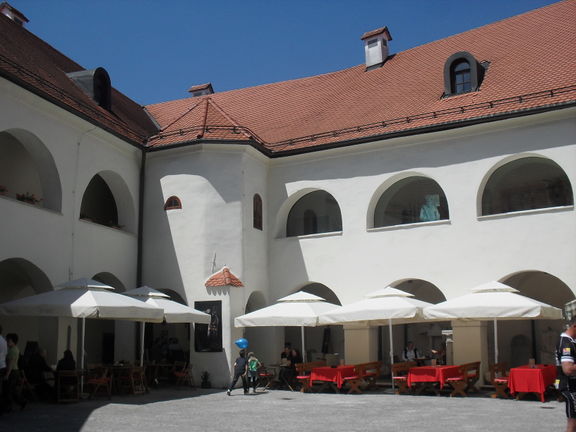Bela krajina Museum, Metlika
History
Although there was a wish of having a museum in Bela krajina from 1910 on, the foundations were laid only in 1949, when Metlika Museum Society was founded. Two years later it was officially established with premises in Metlika castle and town hall. In thirty years developed into significant cultural institution with an extensive permanent exhibition, rich archives, full depositories and library under the leadership of Jože Dular.
In 1981, when Zvonko Rus became the head of the museum, the Gangl Exhibition Gallery was opened in the castle for temporary exhibitions. After the great restoration work on Metlika castle in 1999–2000 the Bela Krajina Museum opened newly arranged permanent exhibition, expanded the dislocated venues and increased the number of visitors.
Programme
The Bela Krajina Museum carries out public service of recording, collecting, documenting, researching, protecting, presenting and popularising the movable cultural heritage of Bela krajina, represented by archaeological, ethnological, cultural-historical, recent historical, and art historical objects. It strengthens the national and regional identity with educational and publishing activity, as well as with many permanent and temporary exhibitions.
Metlika castle
The Metlika castle, first mentioned in 1456, but probably far older, played a key role in defending Carniola from the Turkish raids mainly in the 15th and 16th centuries. In the 16th century, it was owned first by the Alapi counts, then the Frankopans (a Croatian noble family), and subsequently by the Zagreb Cathedral Chapter. After the fires in 1705 and 1790, the restoration work was carried out and the castle building acquired the look of a comfortable town residence.
Today the castle is a several-story complex with a pentagonal ground plan, entered through a three-story entrance tower that opens into a spacious arcaded inner courtyard. It houses the Bela krajina Museum with permanent exhibition and Gangl Exhibition Gallery, a wedding hall and vine cellar and nearby collection of Slovenian Firemen Museum of Dr Branko Božič. In summer it hosts many cultural events: the Castle Evenings program, and the Gangel Exhibition Room is one of the venues for Wine Spring [Vinska vigred] festivities. The castle underwent major restoration works in 1999–2000, including replacement of roof construction and roofing, the ceilings, windows and doors.
Venues
The museum manages four satellites – Kambič Gallery in Metlika, Oton Župančič Memorial Collection in Vinica, Semič Local Museum Collection and Črnomelj Municipal Museum.
Collections
The cultural history collection at Metlika presents the history of Bela krajina from 1200 onwards, from the time the Kolpa became the border river between Carniola and Croatia. One interesting, though dark, period is that of the Turkish incursions in the 15th and 16th centuries. The lapidary collection, established in 1998, contains many fascinating objects relating to Roman, medieval and modern history. The ethnological collection illustrates the way of life in the 19th and early 20th centuries, when Črnomelj and Metlika were major centres of crafts and trade. There is also a special viticulture collection in the castle cellar from 1991 on.
The museum also houses a rich collection of visual arts, emphasising work by artists from Bela krajina. Bela Krajina Museum's exhibitions conclude with the collection of recent history that introduces the visitor to the major events in Bela krajina in the first half of the 20th century.
On the ground floor of Metlika castle, museum visitors can visit the Grajska Klet winery, where they can taste the excellent Bela krajina wines.
Exhibitons
The permanent exhibitions at Metlika castle are: introductory film Images of Bela Krajina in the reception room is a brief presentation of the whole of Bela krajina; exhibition of radio receivers owned by Anton Stipanič (1928–), one of the founders of an amateur radio organisation; archaeological exhibition on settlement in Bela krajina; cultural history exhibition; ethnological exhibition; recent history exhibition; vinicultural exhibition lapidarium under the ground floor of arcades consists of nineteen stone monuments dating from the 2nd century to the end of the 19th century. The temporary exhibitions are held in the Gangl Exhibition Gallery as well as in the dislocated Kambič Gallery.
See also
- Kambič Gallery
- Oton Župančič Memorial Collection
- Semič Local Museum Collection
- Črnomelj Municipal Museum




